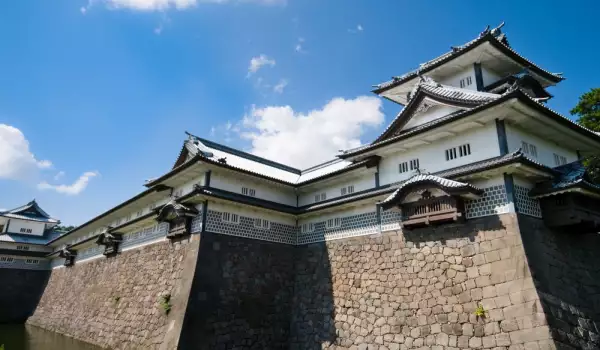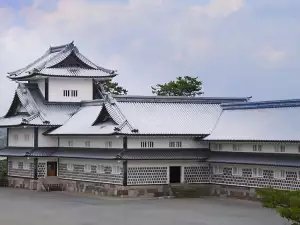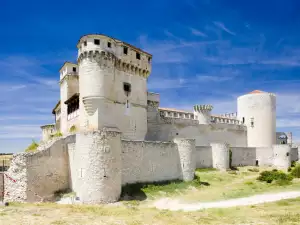Kanazawa Castle

Kanazawa Castle is situated in the Japanese city of Kanazawa, who keeps the ancient culture and tradition of Japanese still alive and Castle Kanazawa is proof of that.
Of course, the now mainly restored palace complex of Kanazawa is one of the favorite tourist destinations for Japanese. Among tourists from western countries the town is not such a popular destination, but the palace Kanazawa is one of the greatest historical landmarks not only the city but also all over Japan.
In literal translation the name, Kanazawa means "quagmire of gold". Kanzava is the chief town of the Ishikawa district in Japan. Situated on the west coast of Honshu, as a country bordering the Sea of Japan, the remaining edges are surrounded by the Japanese Alps National Parks of Noto and Hakusan. The Palace Kanazawa is an excellent example of architecture called the Edo period and the particularly impressive features are the white tiles of the lead castle.
The story of the palace Kanazawa began in 1583 when the Maeda family moved into the town. A major renovation took place in the castle in 1592. As a result of the Korean invasion castle Kanazawa was reinforced by a moat. It was burned down and rebuilt between the year of 1620-1621 and again during the year of 1631-1632.

In 1759 the town of Kanazawa suffered a huge fire, resulting in the palace being literally raised from the ground. Kanazawa castle was completely restored in 1762 and in 1788.
Before World War II the Kanazawa Castle was used as military headquarters by the Japanese army. Until 1989 the beautiful castle houses the University of Kanazawa, which after that year had shifted to the suburbs. The integral part of the harmony of Kanazawa is the famous Gardens of Kenroku-en that were built in the 17th century.
This natural part of the Kanazawa Castle is located on nearly 10 hectares of land. Many consider the Gardens of Kenroku-en to be the most beautiful gardens throughout Japan especially in the spring when the cherry and apricot trees are blooming around the ponds, through which cross the beautiful wooden bridges. The gardens in winter when the snow falls has an additional and different wonderful charm.















